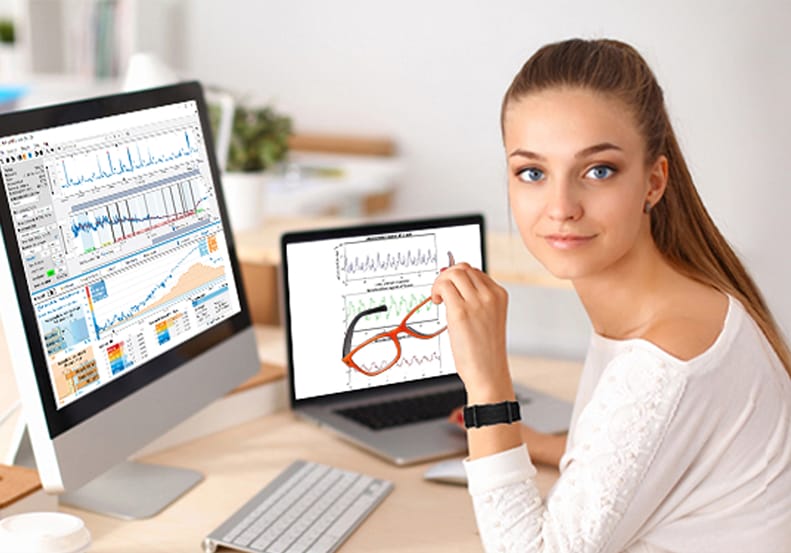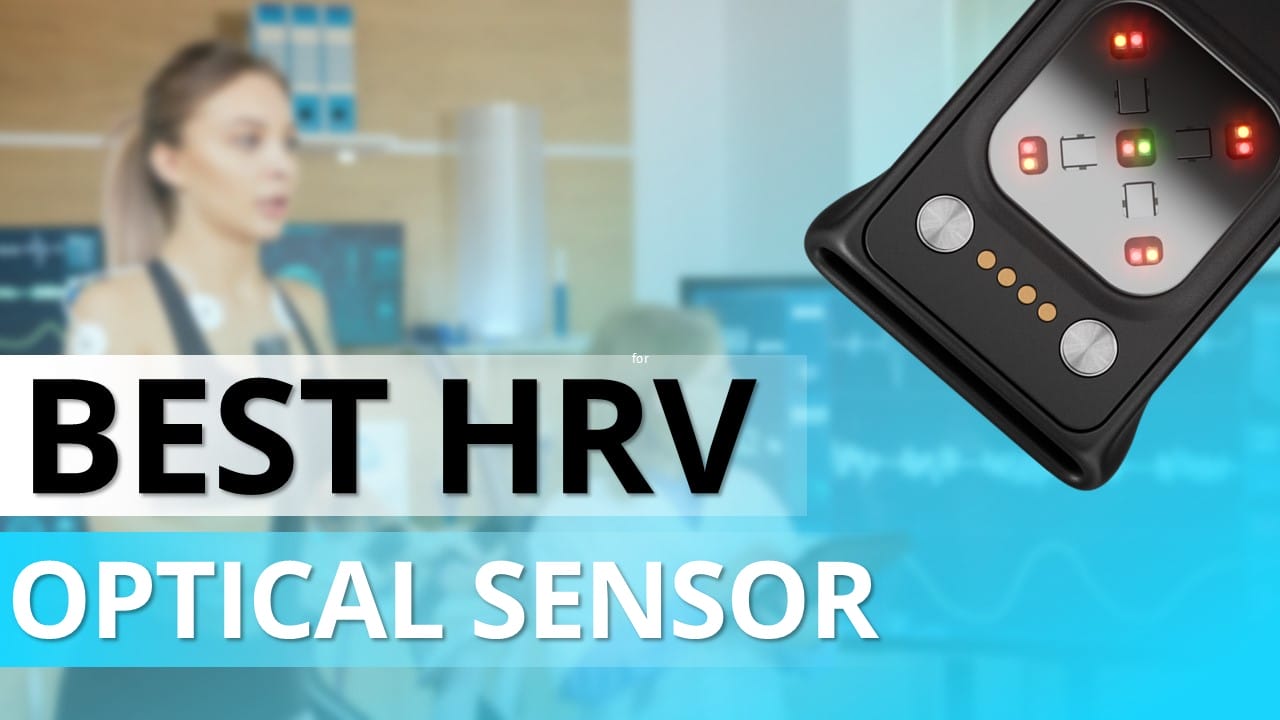HRV Measurement: ECG vs. Optical Sensors
Heart rate variability (HRV) is a key indicator for understanding the balance between the autonomic nervous system’s sympathetic and parasympathetic branches. This makes HRV an important metric in many research areas, from stress and recovery to cardiovascular health. Researchers often use HRV data to track how participants respond to different physical or psychological stressors, making it a valuable tool for understanding long-term health trends.
While ECG-based measurements are the gold standard for accuracy, they can be inconvenient, especially for long-term studies. Pulse-to-pulse interval (PPI) sensors provide a more practical alternative. These sensors, found in wrist-worn and finger-worn devices, allow for easier use in extended studies. While slightly less accurate than ECG, their convenience and continuous monitoring capabilities make them highly suitable for research where ease of use and participant compliance are critical.
Let’s review some of the top PPI-based HRV devices for research, highlighting their pros and cons.
Fibion Helix

The Fibion Helix wristband is an excellent choice for researchers prioritizing accuracy and flexibility. With its PPI sensor and 3D accelerometer, it tracks HRV along with physical activity, sleep, and step counts. One of the biggest advantages of the Fibion Helix is its API and SDK, which allow researchers to easily access and integrate raw data into their systems. The device is lightweight and designed for comfort, making it ideal for long-term wear. Its unobtrusive design also ensures that participants can wear it throughout daily activities without disruption.
Considerations
- Provides high accuracy in HRV and other key metrics.
- Excellent cost-effectiveness compared to similar research-grade devices.
- Includes a robust API and SDK for effortless integration with research systems.
- Lightweight and comfortable, making it suitable for prolonged use.
- Allows access to raw data for in-depth research analysis.
- Lacks a display, which could limit real-time feedback during studies.
2. ActiGraph LEAP
ActiGraph LEAP is known for its comprehensive multisensor setup, offering HRV data along with other metrics such as sleep, activity, and respiratory functions. It integrates seamlessly with cloud-based data platforms and provides extensive remote monitoring capabilities. Ideal for clinical trials and long-term research studies, LEAP offers unparalleled data collection, though it comes at a higher price point.
Considerations
- Delivers a comprehensive range of physiological and environmental measurements.
- Includes a built-in screen for instant data visualization.
- Limited to wrist-worn use, which may restrict placement flexibility.
- Higher price point with additional costs for advanced sensor features.
3. Whoop Strap 4.0
Whoop Strap 4.0 is primarily aimed at athletes and consumers, but its continuous HRV monitoring makes it suitable for recovery and sleep-related research as well. With a sleek, screenless design, it gathers HRV and other health metrics and delivers detailed insights through a subscription-based app. However, it’s more geared toward consumer use, which limits its direct application in scientific research.
Considerations
- Offers continuous HRV monitoring, particularly useful for sleep and recovery insights.
- Lack of display reduces potential distractions for users.
- Comfortable design suitable for extended wear.
- Primarily oriented toward consumer use, with less emphasis on research applications.
- Requires a subscription fee to unlock all app features.
4. Oura Ring
Oura Ring is a small, discreet device designed for sleep tracking and HRV monitoring, mainly during rest. Its compact form factor makes it one of the least obtrusive options available. While it excels in providing overnight HRV data, it’s not designed specifically for researchers, and the measurement from the finger may not be as accurate as wrist-based options. Additionally, Oura Ring likely lacks an API or SDK for integrating raw data into research platforms.
Considerations
- Small, lightweight design ensures a non-intrusive user experience.
- Well-suited for overnight HRV and sleep monitoring.
- Provides basic HRV data without requiring a monthly subscription.
- Finger-based measurements may be slightly less accurate compared to wrist-worn devices.
- Geared more toward consumer use and lacks features tailored for research, such as an API or SDK for raw data access.
Conclusion
These devices offer various strengths depending on your research needs, from convenience and comfort to robust data collection capabilities. Fibion Helix is ideal for those seeking accuracy and flexibility in a compact design, while ActiGraph LEAP provides comprehensive data at a higher cost. Meanwhile, Whoop Strap and Oura Ring are excellent for consumer-focused applications with less emphasis on research customization.
Call to Action
📅 If you want to learn more about Fibion Helix, do not hesitate to book a video call with our expert Dr. Miriam Cabrita.

Frequently Asked Questions:
Why choose optical HRV sensors over ECG for research? +
Optical HRV sensors using PPI are less intrusive and easier to wear over extended periods, making them ideal for long-term studies where participant comfort and continuous monitoring are important.
What makes the Fibion Helix suitable for HRV research? +
The Fibion Helix combines a PPI sensor with raw data access and robust API/SDK support, making it easy to integrate with research platforms and gather detailed HRV, activity, and sleep data.
How does the ActiGraph LEAP benefit research studies? +
ActiGraph LEAP offers multisensor capabilities, including HRV, activity, and sleep tracking, with cloud integration for remote monitoring, making it ideal for clinical trials and large-scale studies.
Is the Whoop Strap 4.0 useful for scientific research? +
While the Whoop Strap 4.0 continuously monitors HRV and is comfortable for long-term wear, it is more consumer-focused and may not provide the raw data access required for detailed research analysis.
What are the advantages of using the Oura Ring for HRV monitoring? +
The Oura Ring is a compact, comfortable device for overnight HRV monitoring, especially during sleep studies, although it lacks API support for research-focused data integration.
How accurate are PPI sensors for HRV research compared to ECG? +
PPI sensors are generally less accurate than ECG but provide sufficient precision for long-term HRV monitoring. Their ease of use makes them a popular choice in studies where participant comfort is prioritized.















